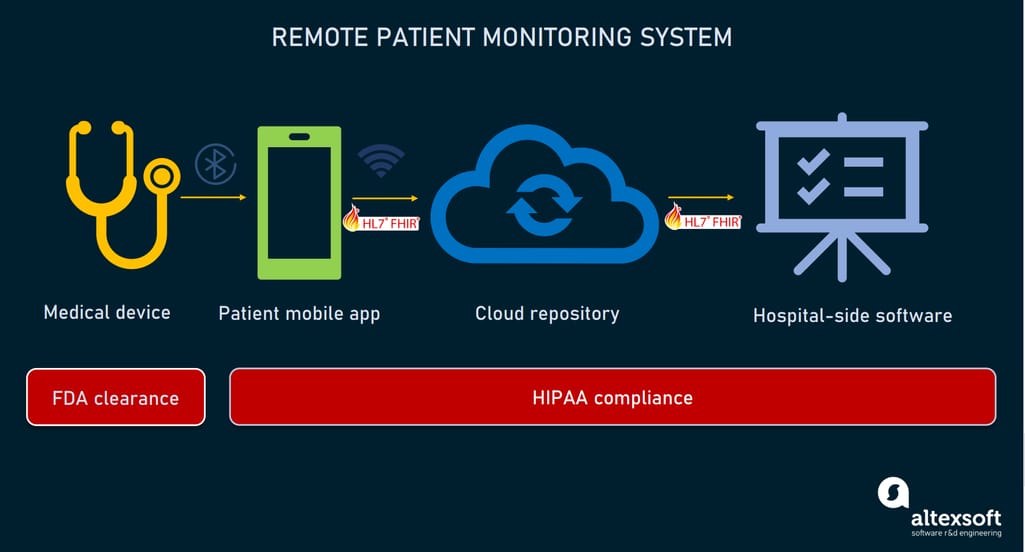Remote Patient Monitoring
(2025-08-27T16:43.101Z)
Perplexity Query
(2025-08-27T16:43
.101Z)
Question:
Write a comprehensive one-page article about "Remote Patient Monitoring".
Response from sonar-pro:
Remote Patient Monitoring: Transforming Modern Healthcare
Remote Patient Monitoring (RPM) is a healthcare delivery method that uses digital devices and technology to collect patient health data outside traditional clinical settings, allowing providers to monitor, assess, and manage conditions from afar.
[jvddw3]
[h1c1tj]
[u5hlps]
RPM is increasingly significant as healthcare systems seek safe, accessible, and efficient ways to care for patients—especially those with chronic or high-risk conditions—while minimizing unnecessary in-person visits.
[jvddw3]
[u5hlps]

RPM enables providers to gather ongoing health data such as blood pressure, glucose levels, weight, and oxygen saturation directly from patients' homes using internet-connected devices.
[09qekb]
[mo8n0i]
These devices range from simple Bluetooth-enabled scales to advanced wearables and biosensors. For example, a heart failure patient might use a connected weight scale and blood pressure cuff to monitor for sudden changes, transmitting data daily to their healthcare team for early intervention.
[09qekb]
Another prevalent use case is diabetes management, where continuous glucose monitors relay real-time data to clinicians, enabling timely adjustments in treatment.
[mo8n0i]
RPM is especially valuable for managing chronic conditions, including heart disease, diabetes, asthma, and chronic obstructive pulmonary disease (COPD).
[mo8n0i]
It is also used in postoperative recovery and behavioral health monitoring.
[u5hlps]
By enabling proactive care, RPM reduces hospital readmissions, lowers travel burdens for patients, and helps prevent complications through early detection.
[jvddw3]
[h1c1tj]
[mo8n0i]
For providers, it allows more efficient resource allocation and the ability to manage larger patient populations effectively.
The benefits of RPM are substantial:
- Enhanced patient engagement and self-management, as individuals become active participants in their care. [h1c1tj]
However, RPM programs must address several challenges. Ensuring data privacy and security is critical, as sensitive health information is transmitted electronically.
[jvddw3]
Not all patients have equal access to digital devices or sufficiently reliable internet connectivity, creating disparities in care.
[mo8n0i]
Technical literacy and willingness to engage with new technology can also be barriers for some populations.
[h1c1tj]
Furthermore, while providers benefit from real-time data, integrating and acting on this information efficiently requires updated clinical workflows and sometimes new reimbursement models.
[h1c1tj]

RPM adoption has accelerated in recent years, fueled by the COVID-19 pandemic and subsequent healthcare policy shifts.
[u5hlps]
[mo8n0i]
The US government expanded telehealth and RPM reimbursement, with Medicare now covering these services for a broad array of conditions.
[09qekb]
According to industry estimates, the global RPM market is projected to reach $1.7 billion by 2027,
[jvddw3]
underscoring its rapid growth. Major technology companies and specialized digital health firms—such as Pylo, Oracle Health, and Health Recovery Solutions—are key players, offering platforms and devices that enable seamless monitoring and data integration.
[h1c1tj]
[mo8n0i]
Recent advancements include integration with wearables for continuous monitoring, artificial intelligence for data analysis, and interoperability with electronic health records.
[u5hlps]
[mo8n0i]

Looking ahead, RPM is expected to become more sophisticated, with artificial intelligence powering predictive analytics for early warning systems and personalized care.
[u5hlps]
[mo8n0i]
The expansion of 5G networks and more affordable connected devices will likely broaden access. RPM’s role in decentralized clinical trials is poised to speed up research and increase diversity in participant recruitment.
[mo8n0i]
Long-term, RPM could help reshape healthcare delivery by enabling truly patient-centered, data-driven care while easing pressures on overtaxed systems.
In summary, Remote Patient Monitoring is redefining the patient-provider relationship and the very nature of healthcare delivery. As technology and clinical practice evolve together, RPM will continue to drive safer, more proactive, and more inclusive care around the world.
Citations
[jvddw3] 2025, Jun 16. What is Remote Patient Monitoring?. Published: 2022-11-14 | Updated: 2025-06-16
[h1c1tj] 2025, Aug 15. A Comprehensive Guide to Remote Patient Monitoring (RPM). Published: 2025-08-15 | Updated: 2025-08-15
[u5hlps] 2025, Jun 16. The Future of Remote Patient Monitoring. Published: 2025-02-19 | Updated: 2025-06-16
[09qekb] 2025, Apr 08. Remote Patient Monitoring. Published: 2025-05-05 | Updated: 2025-04-08
[mo8n0i] 2025, Jun 16. What Is Remote Patient Monitoring (RPM)?. Published: 2025-04-01 | Updated: 2025-06-16